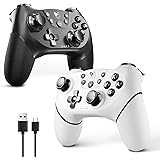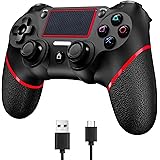The Profound Evolution of Video Game Controllers: From Knobs to Haptic Feedback
In the vast landscape of interactive entertainment, few elements are as critical yet often overlooked as the humble video game controller. As the Watch Mojo video above expertly highlights, this indispensable peripheral serves as our direct conduit to digital worlds, bridging intent with action. Since its earliest inception in the late 1950s, the design and functionality of these input devices have undergone a radical transformation, shaping how we play and pushing the boundaries of what games can achieve.
The journey of video game controllers is a testament to persistent innovation, driven by both technological advancements and an evolving understanding of player ergonomics. Examining this remarkable progression reveals not just a history of hardware, but a deeper narrative about human-computer interaction in gaming.
The Genesis of Gaming Input: Early Iterations and Unconventional Designs
The very first known game controller emerged in the late 1950s, accompanying William A. Higinbotham’s “Tennis for Two.” This rudimentary setup utilized a knob for trajectory control and a button for swing, demonstrating an ingenious simplicity for its era. Despite its successful debut, Higinbotham’s focus remained outside game development, unwittingly laying the groundwork for an entire industry.
As the 1970s dawned, a period of wild experimentation in controller design unfolded. Many early attempts retained the knob and button paradigm, but often with awkward or overly ambitious twists. The RCA Studio II, for example, famously resembled an oversized calculator, while the Calico Telstar Arcade bizarrely integrated three distinct control schemes—knobs, a steering wheel, and a plastic handgun—into a single unit. These early video game controllers often struggled with intuitive input, highlighting a nascent industry still grappling with fundamental interface principles.
Despite these quirky designs, some controllers, like the Fairchild Channel F console, remarkably offered eight-way directional inputs. This early foresight into robust directional movement hinted at the standardization to come. However, true mainstream adoption of a more familiar controller design wouldn’t arrive until 1977.
The Atari 2600 and the Dawn of the Modern Joystick
The year 1977 marked a pivotal moment with the introduction of the Atari 2600. Its controller, a simple yet effective joystick featuring four-way directional input and a single red button, revolutionized gameplay. This simplistic design eschewed the complexity of many competitors, making games significantly more intuitive and accessible for a broader audience.
The delay between Higinbotham’s “Tennis for Two” in 1958 and the Atari 2600’s debut illustrates a crucial challenge in early game development: a lack of immediate consumer feedback. As Adam Coe, CEO and founder of Evil Controllers, notes, developers in those decades operated with significant communication delays. Releasing a product, gathering feedback, and implementing changes was a protracted process, directly hindering rapid design iteration and the refinement of video game controllers.
Nintendo’s Paradigm Shifts: The D-Pad and NES Simplicity
Nintendo’s entry into the gaming hardware market in 1980 brought forth another profound innovation: the D-pad. Initially featured on their Game & Watch series, this miniature device began with two buttons for left and right movement. Recognizing the ergonomic limitations of multiple individual buttons, Gunpei Yokoi and his team ingeniously replaced them with a cross-shaped lever. This single piece could be programmed for eight directions, offering a tactile and efficient directional input that dramatically improved player comfort and precision.
When Nintendo set its sights on the home console market, accessibility and affordability were paramount. By eliminating the keyboard common in many contemporary systems, Nintendo focused on creating a new, streamlined player interface. The Nintendo Entertainment System (NES) controller solidified the D-pad’s revolutionary status. Paired with just two face buttons and Start/Select, the NES controller provided an elegant, user-friendly input scheme that quickly became the industry standard. This design philosophy proved immensely successful, proving that simplicity and intuitive design were key to mass adoption.
Competitors like Atari and Commodore struggled to adapt, often clinging to complex or idiosyncratic input methods. Sega and Sony, however, wisely adopted Nintendo’s successful blueprint, integrating the D-pad on the left and face buttons on the right into their own formats. This established a foundational layout that persists in many modern video game controllers.
Enhancing the Standard: Durability, Analog Input, and Haptic Feedback
Early video game controllers, while functional, often lacked significant durability considerations. With the sixth generation of home consoles—including the Nintendo GameCube, Sega Dreamcast, Sony PlayStation 2, and Microsoft’s original Xbox—durability became a discernible priority. These systems introduced bulkier, more robust controllers, with a tangible sense of compact and resilient internal components. This engineering shift aimed to provide players with a comfortable, enduring peripheral, designed to withstand the rigors of intense gaming sessions.
Beyond raw durability, the mid-1990s heralded an era of transformative innovations in control input. In 1996, the Nintendo 64 introduced the analog stick, a game-changer for navigating 3D environments with unparalleled fluidity and precision. This single innovation allowed for nuanced movement that a digital D-pad simply couldn’t replicate, fundamentally reshaping game design possibilities.
A year later, Sony elevated this concept with the first Dual Shock controller. This reworked PlayStation peripheral featured dual analog sticks, not only preventing the “D-pad thumb” many players experienced but also providing developers with vastly expanded camera control and navigation options. Adam Coe highlights the profound impact of analog sticks, noting their evolution from novel feature to absolute necessity for engaging with modern games effectively.
Furthermore, the late 90s saw the introduction of another groundbreaking feature: rumble. Nintendo’s Rumble Pak, followed closely by Sony’s Dual Shock, brought tactile feedback directly into the player’s hands. What started as a simple vibration mechanism quickly evolved into a sophisticated communication tool. Haptic feedback now conveys critical in-game information, from damage sustained to subtle environmental cues, significantly enhancing player immersion and situational awareness. Features like the Nintendo Switch’s HD Rumble represent the ongoing refinement of this technology, showcasing its integral role in contemporary game design.
These advancements—analog sticks and haptic feedback—are often taken for granted today. Yet, without them, the precision required for modern shooters, the timing critical for fighting games, and the nuanced interactions across countless genres would be significantly diminished. They empower players to execute complex inputs with greater ease and accuracy, fundamentally enriching the interactive experience.
The Elusive Quest for Perfection: Customization and Accessibility
The eighth generation of consoles, while not introducing singular, revolutionary hardware components, largely focused on refining existing technologies and pushing the boundaries of customization and accessibility. The pursuit of a “perfect” controller remains an impossible goal, as player demands vary wildly across different genres and playstyles. Adam Coe emphasizes the challenge of creating a single controller that satisfies every individual preference.
Controllers like Sony’s Dual Shock 4 and Xbox’s contemporary offerings integrated more sensitive triggers and enhanced haptic features, providing unprecedented levels of feedback. Their construction also became more resilient, reflecting the ongoing demand for robust gaming peripherals. Nintendo, with the Switch, embraced modularity, offering multiple controller configurations within a single console ecosystem, catering to diverse play scenarios.
A crucial frontier in controller design has emerged around accessibility. As gaming’s global reach expands, ensuring equitable access for players with disabilities has become a moral and technical imperative. The Xbox Adaptive Controller, introduced in 2018, stands as a landmark achievement, designed with modularity to accommodate a wide array of physical limitations. Companies like Evil Controllers, led by Adam Coe, further specialize in highly customized solutions for gamers with conditions such as muscular dystrophy, cerebral palsy, or amputations. This commitment to accessible gaming ensures that the joy of interactive entertainment is available to everyone, tailoring input solutions to individual needs.
The Horizon of Controller Innovation: Adaptive Feedback and Enhanced Ergonomics
The future of video game controllers promises continued innovation, building upon the foundations laid over decades. Next-generation peripherals, such as Sony’s DualSense for the PlayStation 5, incorporate adaptive feedback in triggers and advanced haptics, offering dynamic resistance and nuanced vibrations that respond directly to in-game actions. Integrating features like built-in microphones also streamlines player communication, fostering more seamless multiplayer experiences. Developers are recognizing that the controller is not just an input device, but an extension of the player’s presence within the game world, actively enhancing immersion through sensory feedback.
Future iterations must also meticulously balance the needs of both casual and hardcore gamers. Hardcore players, who might log 50 to 60 or more hours weekly, require controllers built to withstand extreme wear and tear. Their preferences often lean towards precision, responsiveness, and durability. Casual players, with their 10 to 15 hours per week, prioritize comfort, ease of use, and immediate accessibility. Designing video game controllers that can cater to this wide spectrum, or offering tailored options, will be critical for sustained market success.
With innovations like thumbsticks seeing substantial improvements over nine years, the expectation for continuous hardware refinement remains high. The journey of video game controllers, from simple knobs to sophisticated haptic interfaces, demonstrates an unrelenting drive to perfect the connection between player and game. This evolution underscores the profound importance of these devices, often taken for granted, in shaping our interactive experiences and ensuring that the future of gaming remains as engaging and inclusive as possible.









